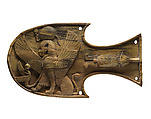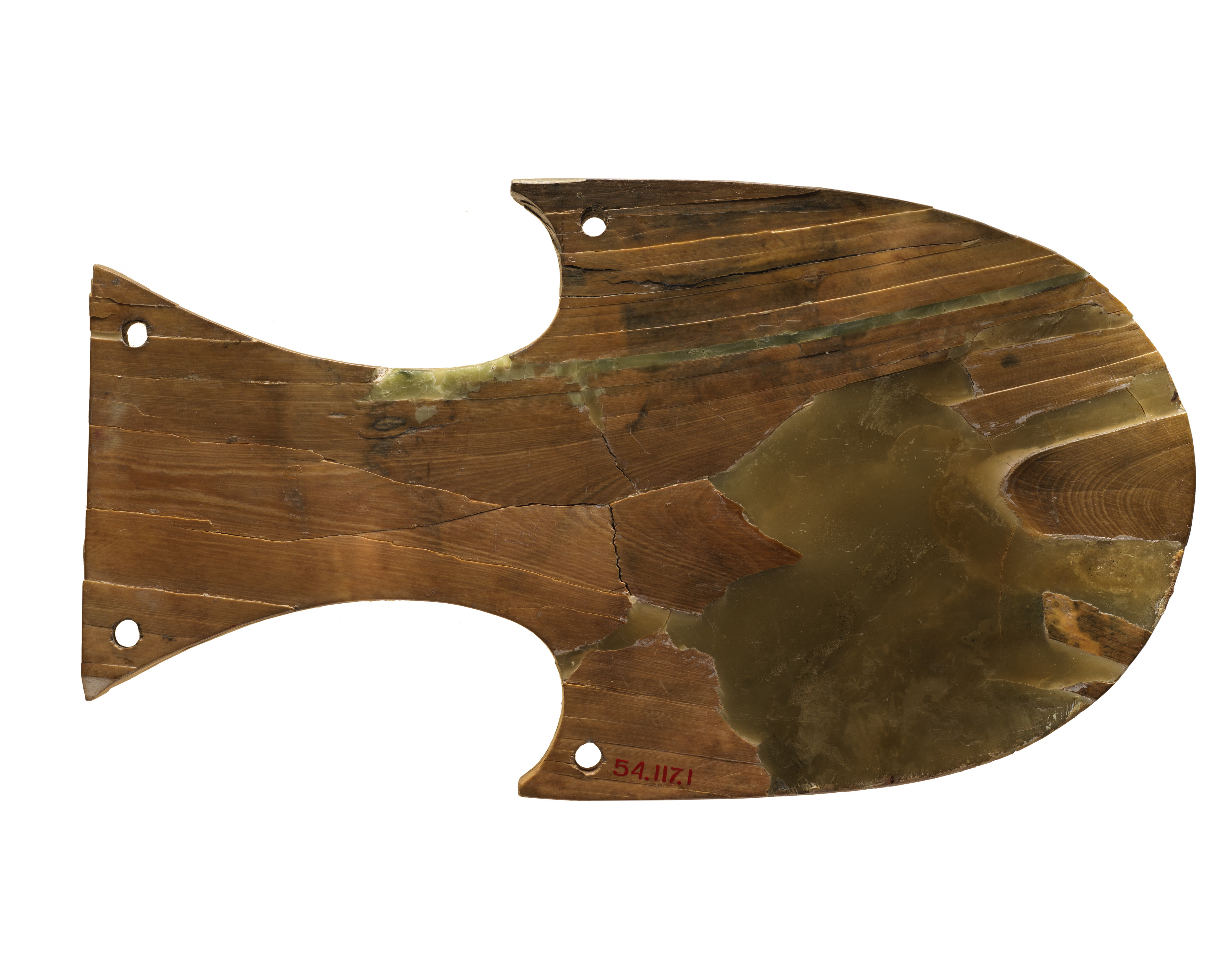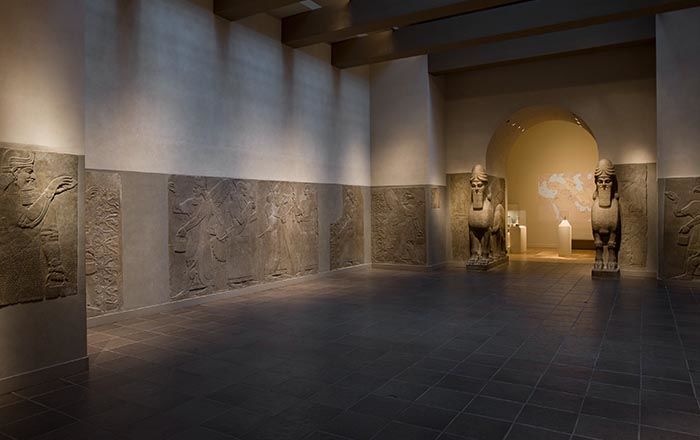Horse blinker carved in relief with a seated sphinx
Not on view
The craftsmen who carved ivories in the Phoenician style were strongly influenced by Egyptian art. Many of these ivories illustrate Egyptian themes and motifs, but in entirely original compositions. Phoenician-style ivories were used primarily as furniture decoration. Some are solid plaques; others are carved on one or both sides in a delicate openwork technique. Many were originally covered with gold leaf and inlaid with semiprecious stones or colored glass.
Elaborate horse trappings, including frontlets and blinkers such as this one, were sometimes crafted from ivory and are represented on Assyrian reliefs. This spade-shaped horse blinker is decorated in low relief with a seated sphinx wearing the Egyptian cobra, or uraeus, and sun disk on its head. Another winged uraeus and sun disk faces the sphinx to its left. Behind the sphinx is a cartouche attached to a lotus plant. The hieroglyphic inscription inside the cartouche is a Phoenician name, "Djunen."
This image cannot be enlarged, viewed at full screen, or downloaded.
This artwork is meant to be viewed from right to left. Scroll left to view more.



